Many tillage farmers have been introduced to the concept of incorporating organic matter for the first time in decades through the new straw incorporation measure (SIM), or what most call the straw chopping scheme.
Straw incorporation will bring many benefits to tillage farmers, benefits that range from increasing the friability of the soil, adding and storing carbon, removing fewer nutrients (especially potash) and decreasing the diesel, time and effort normally needed for crop establishment.
The cultivation during the incorporation will also help to get volunteers and weed seeds to grow to help reduce the size of the weed seed bank.
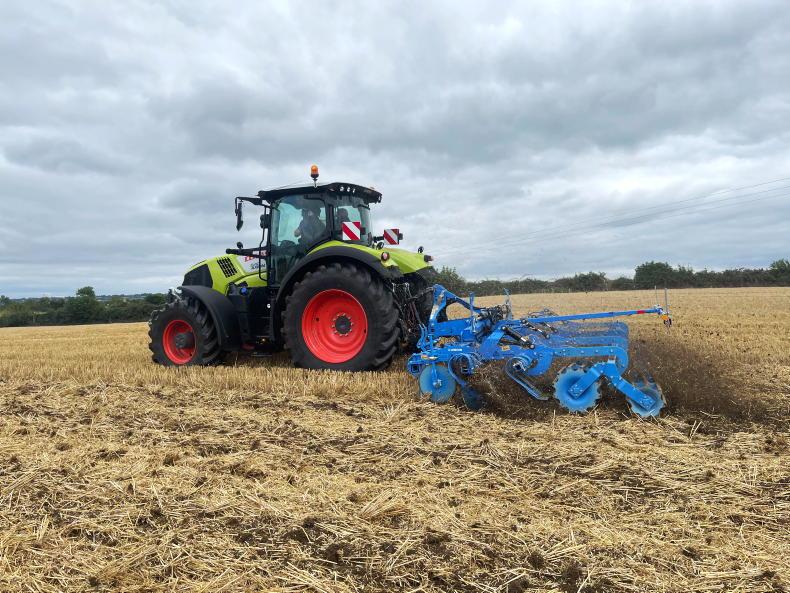
The use of a disc cultivator will provide better undercutting of all the stubble to release its grip in the ground while also providing better mixing of the soil and straw.
However, incorporation also brings additional costs associated with the diesel required for chopping, the additional diesel and metal for incorporation and extra nitrogen on the immediate following crops for the first two to three years of incorporation.
Microorganisms consume a lot of N
This is because the army of microorganisms that must be built up in the soil to help break down the straw use nitrogen as a fuel source. To compensate for this usage, it is advised to apply an additional 10-15 units per acre for the first few years.
After a few years of incorporation the soil system returns to an equilibrium and the nitrogen released from decomposing straw in the previous years feeds the breakdown of the new crop.
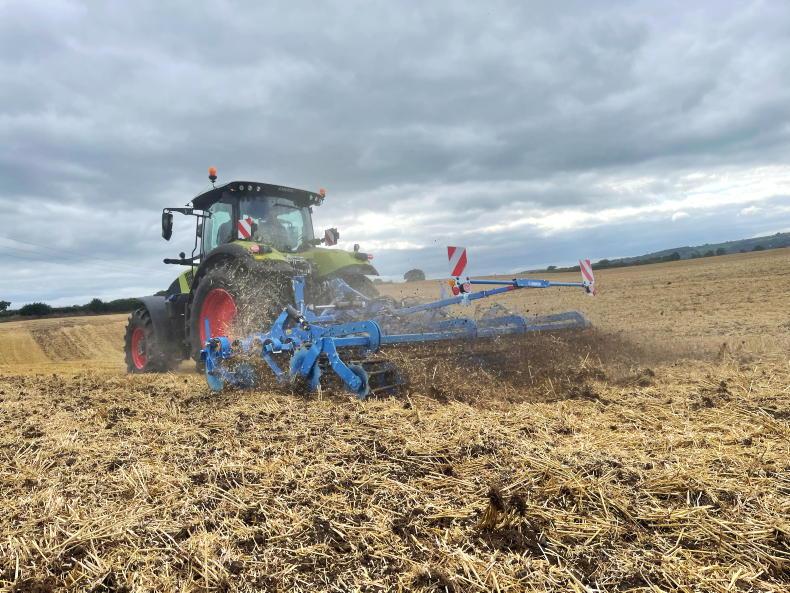
To achieve the satisfactory mixing effect in a heavy crop of winter wheat, we found that a forward speed of 12-15km/h was much more successful than working the same shallow depth at a speed of 7-8km/h.
Chopping and incorporation might not be the most technical of farming jobs but there are two important elements to getting it done right. The first is getting the chopping right and the second involves the job of incorporation.
Getting the chopping right
The success of a chopping operation depends to some degree on the maturity of the straw and length of the chop. This is not necessarily a fixed length, but rather a length that ensures that only one node is present on each piece of stem.
This is to ensure that any piece of stem can be attacked from both ends on the inside and outside of its entire length. This speeds up the breakdown of the straw.
Getting straw chop length correct is very much a matter of the number of blades on the chopping rotor and the number and maintenance of the knives in the unit. The sharpness of these tools will affect chop quality and the fuel required. It is not necessary or advisable to chop the straw excessively.
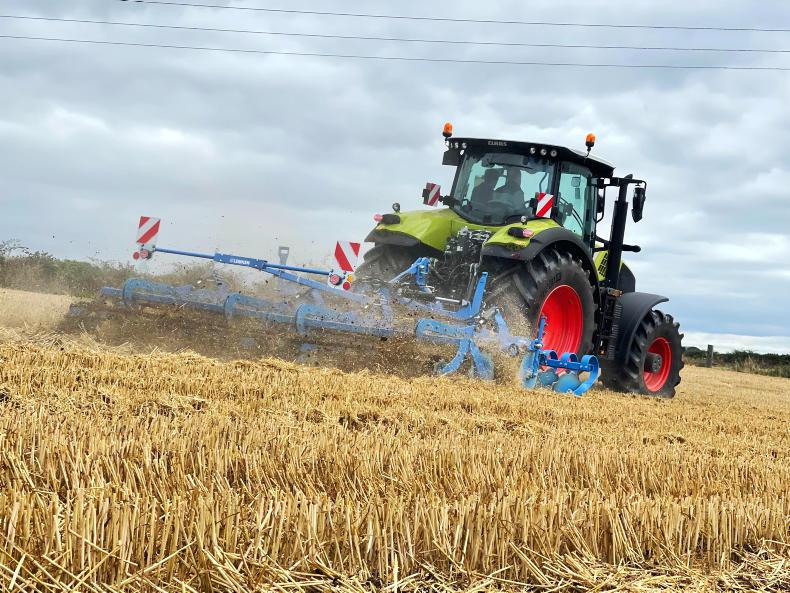
One of the most important things for the initial incorporation is that it be done as shallowly as is practically possible, whilst ensuring that all the ground is loosened and that there is enough lose soil to get a good mixing of straw and soil.
As well as the chop length, the even delivery of chopped straw across the working width of the combine is also very important. Lack of uniform application means more straw to incorporate in some areas and less in others but this would level out over time.
By virtue of their mass, small pieces of straw may not be blown uniformly across the working width so we do not want over-chopping. If the straw cannot be spread uniformly, neither can it be incorporated uniformly.
Having straw in 4in to 6in pieces has another important benefit. Earthworms gather their food by coming out of their burrow and wriggling around on the surface to gather their food in a circular motion.
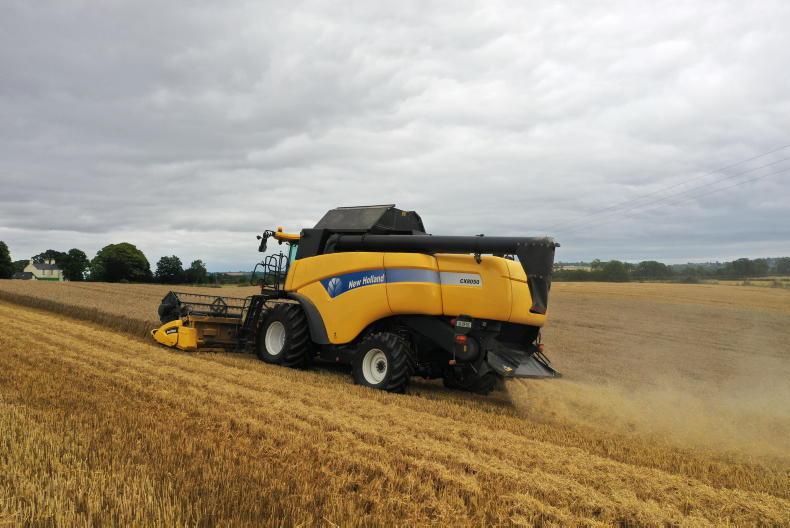
In addition to chop length, the even delivery of the chopped straw across the working width of the combine table is also very important.
In doing this they pull in everything on the surface over the top of each burrow. After that they pull the straws down in the burrow over time, leaving only a little pile of small stones on the surface which were gathered with the food.
Getting the incorporation right
Incorporating the chopped straw into the soil is an important element of the process. If straw is not incorporated, ie mixed in with soil, in advance of operations like ploughing, you will end up with a sandwich of straw between each furrow. This can act as a highway for slugs to move from the shelter of the soil to above ground to attack a new crop.
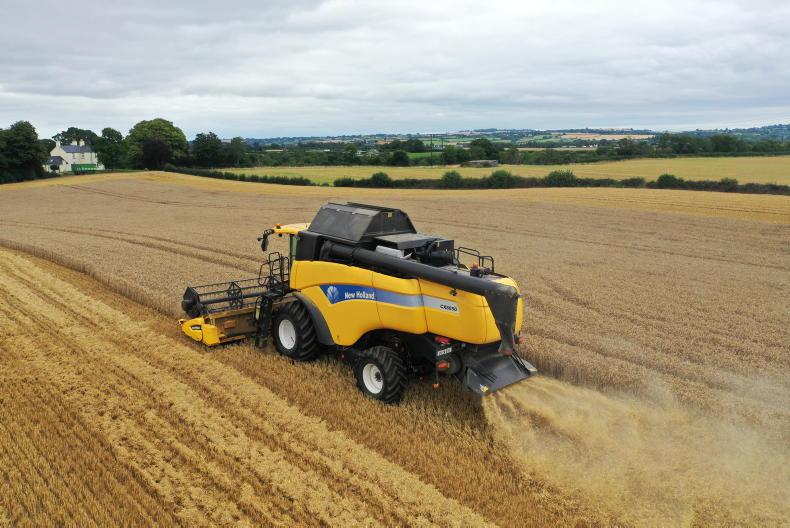
The lack of uniform straw application will mean more straw to incorporate in some areas and less in others.
This must be avoided as there is little point in adding cost to incorporation if it results in having even more costs in subsequent crops.
The simple principle behind incorporation is to mix the straw in with the soil. This does not mean that all the straw will be covered or incorporated post cultivation.
However, it will all have come in contact with soil during the mixing process and will at least be peppered with little bits of soil that contain thousands of microorganisms to begin straw breakdown.
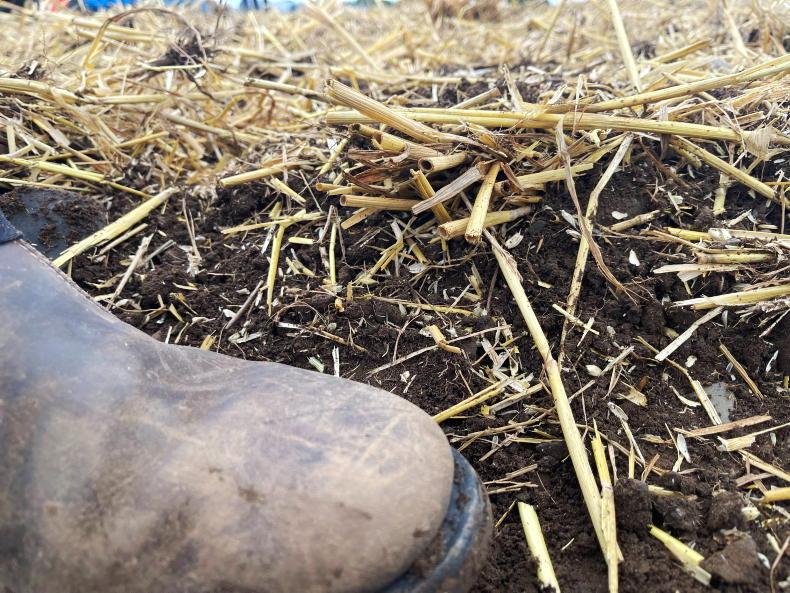
Good incorporation will leave the majority of the straw and stubble in the soil but close to the surface where there is adequate oxygen to fuel the different organisms that will begin to break it down and release the nutrients that it contains.
But good incorporation will leave the majority of the straw and stubble in the soil but close to the surface where there is adequate oxygen to fuel the different organisms that will begin to break it down.
The right tool for the job
Incorporation can be done using a tined or disc cultivator. However, our preference is for a disc machine for the first run. This should provide better undercutting of all the stubble, release its grip in the ground and provide better mixing of the soil and straw.
A machine with large angular concave discs (ideally serrated) we found was best suited to the job. 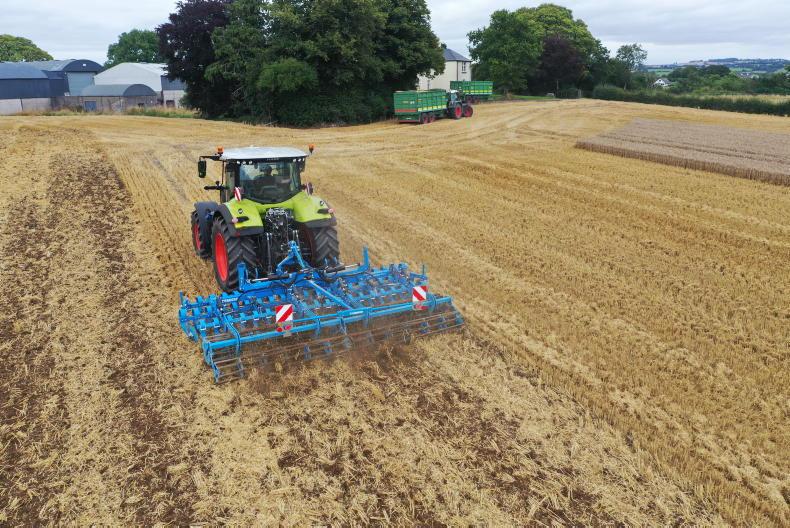
The large concave and serrated design, along with the angular arrangement, creates an aggressive undercutting effect, helping kick the soil up and allow mixing to occur.
One of the most important things for the initial incorporation is that it be done as shallowly as is practically possible, while ensuring that all the ground is loosened and that there is enough loose soil to get a good mixing of straw and soil.
To coincide with depth, forward speed is also an important factor. To achieve the satisfactory mixing effect in a heavy crop of winter wheat straw, we found that a forward speed of 12km/h to 15km/h was much more successful than working the same shallow depth at a speed of 7km/h to 8km/h.
Doing the job
Being able to keep this work as shallow as possible helps avoid a problem later in the year if loose soil gets wet. Try to produce no more loose soil then the thickness of the lugs on your tractor tyres. Cultivating deeper during this first pass will produce more soil and appear to incorporate more of the straw but the risks associated with having too much loose soil outweigh any benefits of achieving higher incorporation.
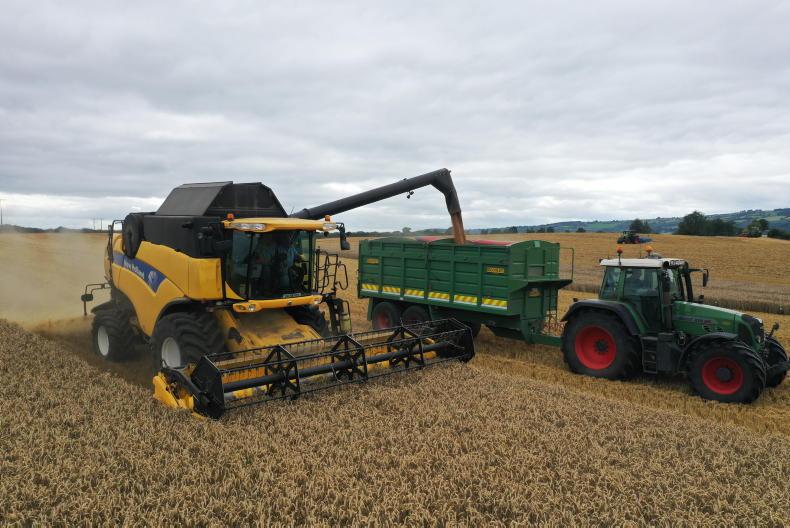
It is generally regarded as good practice to travel at an angle to the direction of sowing when cultivating. This would seem to provide a more uniform mixing of the stubble, more so than the straw.
When the disc cultivator was operated directly in line with the drill rows it seemed that more of the stubble was being left on top of the ground.
While not all of the straw will have been fully incorporated on the first pass, there will still be a lot of straw buried in that shallow cultivated layer.
You can see this if you strip the soil gently with your hands layer by layer.
Big straw volumes
The challenge of incorporation looks bigger when there are greater volumes of straw to be incorporated. One way to lessen this task for first-timers is to cut higher. This leaves more stubble but less straw to be incorporated.
As a general rule you will grow the same tonnage of straw as grain so that’s a lot of dry bulky material to be incorporated into the soil.
The straw volume will appear big and onerous for the first few years of chopping and incorporation.
However, after a few years of incorporation, when the army of biological organisms in the soil build to a sufficient level, that volume of straw will quickly appear to “melt” post-harvest.
It is as if the chopped straw is being pulled down into the soil by the myriad of organisms within it and the task of dealing with it is lessened over time.
So, in summary, the objective is to get soil on to the straw and the stubble rather than needing to have all the straw covered by soil.
There are a number of benefits in keeping the straw close to the surface.
Oxygen is more available here for the microorganisms that break down the straw and earthworms can respond to the feast of food they find close to the surface by multiplying in numbers.
More nitrogen may be needed by the crop for the first few years following incorporation.
The Irish Farmers Journal would like to thank Hugh McDonnell for the use of the land, Kellys of Borris for the use of the tractor and Lemken for the use of the disc cultivator.
Many tillage farmers have been introduced to the concept of incorporating organic matter for the first time in decades through the new straw incorporation measure (SIM), or what most call the straw chopping scheme.
Straw incorporation will bring many benefits to tillage farmers, benefits that range from increasing the friability of the soil, adding and storing carbon, removing fewer nutrients (especially potash) and decreasing the diesel, time and effort normally needed for crop establishment.
The cultivation during the incorporation will also help to get volunteers and weed seeds to grow to help reduce the size of the weed seed bank.

The use of a disc cultivator will provide better undercutting of all the stubble to release its grip in the ground while also providing better mixing of the soil and straw.
However, incorporation also brings additional costs associated with the diesel required for chopping, the additional diesel and metal for incorporation and extra nitrogen on the immediate following crops for the first two to three years of incorporation.
Microorganisms consume a lot of N
This is because the army of microorganisms that must be built up in the soil to help break down the straw use nitrogen as a fuel source. To compensate for this usage, it is advised to apply an additional 10-15 units per acre for the first few years.
After a few years of incorporation the soil system returns to an equilibrium and the nitrogen released from decomposing straw in the previous years feeds the breakdown of the new crop.

To achieve the satisfactory mixing effect in a heavy crop of winter wheat, we found that a forward speed of 12-15km/h was much more successful than working the same shallow depth at a speed of 7-8km/h.
Chopping and incorporation might not be the most technical of farming jobs but there are two important elements to getting it done right. The first is getting the chopping right and the second involves the job of incorporation.
Getting the chopping right
The success of a chopping operation depends to some degree on the maturity of the straw and length of the chop. This is not necessarily a fixed length, but rather a length that ensures that only one node is present on each piece of stem.
This is to ensure that any piece of stem can be attacked from both ends on the inside and outside of its entire length. This speeds up the breakdown of the straw.
Getting straw chop length correct is very much a matter of the number of blades on the chopping rotor and the number and maintenance of the knives in the unit. The sharpness of these tools will affect chop quality and the fuel required. It is not necessary or advisable to chop the straw excessively.

One of the most important things for the initial incorporation is that it be done as shallowly as is practically possible, whilst ensuring that all the ground is loosened and that there is enough lose soil to get a good mixing of straw and soil.
As well as the chop length, the even delivery of chopped straw across the working width of the combine is also very important. Lack of uniform application means more straw to incorporate in some areas and less in others but this would level out over time.
By virtue of their mass, small pieces of straw may not be blown uniformly across the working width so we do not want over-chopping. If the straw cannot be spread uniformly, neither can it be incorporated uniformly.
Having straw in 4in to 6in pieces has another important benefit. Earthworms gather their food by coming out of their burrow and wriggling around on the surface to gather their food in a circular motion.

In addition to chop length, the even delivery of the chopped straw across the working width of the combine table is also very important.
In doing this they pull in everything on the surface over the top of each burrow. After that they pull the straws down in the burrow over time, leaving only a little pile of small stones on the surface which were gathered with the food.
Getting the incorporation right
Incorporating the chopped straw into the soil is an important element of the process. If straw is not incorporated, ie mixed in with soil, in advance of operations like ploughing, you will end up with a sandwich of straw between each furrow. This can act as a highway for slugs to move from the shelter of the soil to above ground to attack a new crop.

The lack of uniform straw application will mean more straw to incorporate in some areas and less in others.
This must be avoided as there is little point in adding cost to incorporation if it results in having even more costs in subsequent crops.
The simple principle behind incorporation is to mix the straw in with the soil. This does not mean that all the straw will be covered or incorporated post cultivation.
However, it will all have come in contact with soil during the mixing process and will at least be peppered with little bits of soil that contain thousands of microorganisms to begin straw breakdown.

Good incorporation will leave the majority of the straw and stubble in the soil but close to the surface where there is adequate oxygen to fuel the different organisms that will begin to break it down and release the nutrients that it contains.
But good incorporation will leave the majority of the straw and stubble in the soil but close to the surface where there is adequate oxygen to fuel the different organisms that will begin to break it down.
The right tool for the job
Incorporation can be done using a tined or disc cultivator. However, our preference is for a disc machine for the first run. This should provide better undercutting of all the stubble, release its grip in the ground and provide better mixing of the soil and straw.
A machine with large angular concave discs (ideally serrated) we found was best suited to the job. 
The large concave and serrated design, along with the angular arrangement, creates an aggressive undercutting effect, helping kick the soil up and allow mixing to occur.
One of the most important things for the initial incorporation is that it be done as shallowly as is practically possible, while ensuring that all the ground is loosened and that there is enough loose soil to get a good mixing of straw and soil.
To coincide with depth, forward speed is also an important factor. To achieve the satisfactory mixing effect in a heavy crop of winter wheat straw, we found that a forward speed of 12km/h to 15km/h was much more successful than working the same shallow depth at a speed of 7km/h to 8km/h.
Doing the job
Being able to keep this work as shallow as possible helps avoid a problem later in the year if loose soil gets wet. Try to produce no more loose soil then the thickness of the lugs on your tractor tyres. Cultivating deeper during this first pass will produce more soil and appear to incorporate more of the straw but the risks associated with having too much loose soil outweigh any benefits of achieving higher incorporation.

It is generally regarded as good practice to travel at an angle to the direction of sowing when cultivating. This would seem to provide a more uniform mixing of the stubble, more so than the straw.
When the disc cultivator was operated directly in line with the drill rows it seemed that more of the stubble was being left on top of the ground.
While not all of the straw will have been fully incorporated on the first pass, there will still be a lot of straw buried in that shallow cultivated layer.
You can see this if you strip the soil gently with your hands layer by layer.
Big straw volumes
The challenge of incorporation looks bigger when there are greater volumes of straw to be incorporated. One way to lessen this task for first-timers is to cut higher. This leaves more stubble but less straw to be incorporated.
As a general rule you will grow the same tonnage of straw as grain so that’s a lot of dry bulky material to be incorporated into the soil.
The straw volume will appear big and onerous for the first few years of chopping and incorporation.
However, after a few years of incorporation, when the army of biological organisms in the soil build to a sufficient level, that volume of straw will quickly appear to “melt” post-harvest.
It is as if the chopped straw is being pulled down into the soil by the myriad of organisms within it and the task of dealing with it is lessened over time.
So, in summary, the objective is to get soil on to the straw and the stubble rather than needing to have all the straw covered by soil.
There are a number of benefits in keeping the straw close to the surface.
Oxygen is more available here for the microorganisms that break down the straw and earthworms can respond to the feast of food they find close to the surface by multiplying in numbers.
More nitrogen may be needed by the crop for the first few years following incorporation.
The Irish Farmers Journal would like to thank Hugh McDonnell for the use of the land, Kellys of Borris for the use of the tractor and Lemken for the use of the disc cultivator.









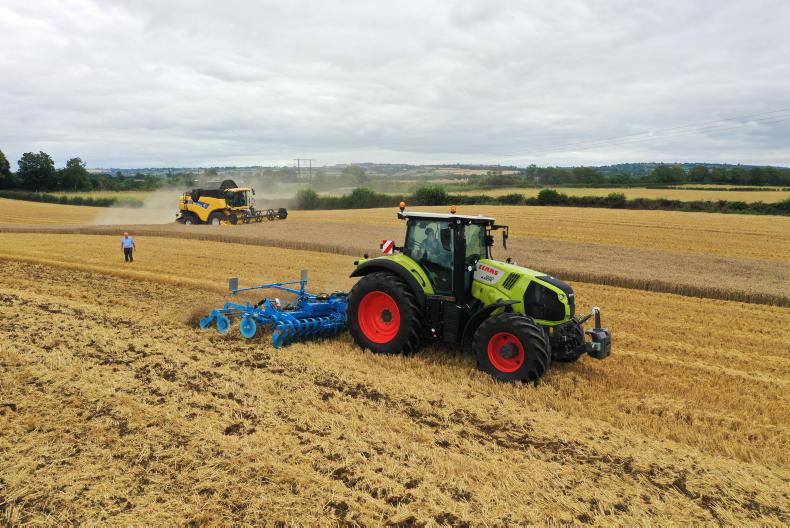




 This is a subscriber-only article
This is a subscriber-only article










SHARING OPTIONS: